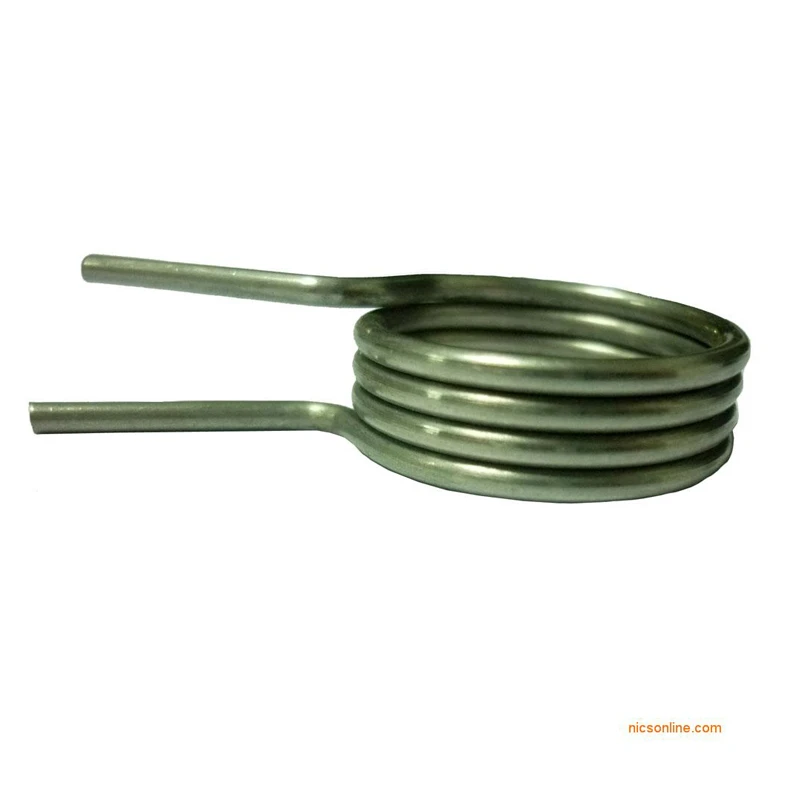
- Mobile Phone
- +8613931874955
- sales@cntcmetal.com
Design and Applications of Lightweight Torsion Springs for Various Mechanical Systems
Understanding Light Duty Torsion Springs Applications, Design, and Benefits
Torsion springs are mechanical devices that store potential energy when twisted or rotated. Among the various types of torsion springs, light duty torsion springs play a crucial role in countless applications across various industries. This article delves into the characteristics, applications, design considerations, and benefits of light duty torsion springs.
What Are Light Duty Torsion Springs?
Light duty torsion springs are specifically designed to handle low to moderate loads. They are typically constructed from high-quality materials such as music wire or stainless steel, which provide the necessary strength and flexibility. The defining characteristic of a torsion spring is its ability to exert a force when twisted about its axis. This force is proportional to the angle of twist, which is an essential aspect for designers and engineers when calculating the spring's performance.
Key Applications
Light duty torsion springs find extensive applications in various everyday products and systems. Some common uses include
1. Clips and Fasteners Many office supplies, like paper clips and binder clips, utilize light duty torsion springs to maintain clamping force. These springs allow for easy opening and secure closing.
2. Automotive Components In vehicles, light duty torsion springs are often employed in mechanisms like sun visors, trunk latches, and seat recliners, where low-force applications are required.
3. Household Appliances Appliances such as toasters and microwaves incorporate torsion springs to smoothly and securely operate doors and lids. The springs assist in creating a controlled motion, ensuring functionality and user safety.
4. Toys and Consumer Products Many toys, especially those that involve a twisting or snapping motion, rely on light duty torsion springs for their operation, enhancing playability and fun.
Design Considerations
When designing light duty torsion springs, several factors must be taken into account to ensure optimal performance and longevity
light duty torsion spring

- Material Selection The choice of material affects the spring’s strength, fatigue life, and resistance to corrosion. For applications involving exposure to moisture or harsh chemicals, stainless steel is often preferred. In contrast, music wire is suitable for applications where cost-efficiency is paramount.
- Spring Configuration The shape and dimensions of the spring determine its torque capacity and range of motion. Designers often utilize computer-aided design (CAD) software to simulate the spring’s behavior under various loading conditions.
- Coil Diameter and Wire Size The diameter of the coil and the wire itself greatly influence the spring’s performance characteristics. Smaller diameters typically create higher torque but can also increase stress, necessitating a careful balance based on the application’s requirements.
- Testing and Quality Control After manufacturing, torsion springs typically undergo rigorous testing to ensure they meet specifications. This includes evaluating parameters such as load-bearing capacity, durability, and overall functionality.
Benefits of Light Duty Torsion Springs
The use of light duty torsion springs comes with numerous advantages
1. Space Efficiency Torsion springs are compact and can be designed to fit into tight spaces, making them ideal for applications where space is limited.
2. Simplicity and Reliability With fewer moving parts compared to other mechanisms, torsion springs provide a reliable solution with minimal maintenance requirements.
3. Cost-Effectiveness The production of light duty torsion springs is economical, and their longevity often means that they do not need frequent replacement, further lowering lifecycle costs.
4. Customization These springs can be easily tailored to specific applications, with variations in size, material, and design, allowing manufacturers to meet strict engineering demands.
5. Smooth Operation The nature of torsion springs aids in providing smooth and controlled motion, which is essential in consumer products and machinery.
Conclusion
Light duty torsion springs are integral components in many facets of modern life, contributing to the functionality and reliability of various machines and products. Understanding their design, applications, and benefits helps industries make informed decisions when integrating these springs into their systems. As technology advances, the importance of these seemingly simple devices is likely to grow, continually enhancing the performance of countless products and applications.
share:
-
Your Source for Concrete Wall Ties and Masonry AccessoriesNewsJul.10,2025
-
Unlocking the Power of Iron Wire for Every ProjectNewsJul.10,2025
-
Explore Advanced Chain Wire and Stainless Steel Mesh FencingNewsJul.10,2025
-
Discover the Benefits of Annealed Wire ProductsNewsJul.10,2025
-
Discover China Stainless Steel Wire Mesh SolutionsNewsJul.10,2025
-
Build with Confidence Using High-Performance Masonry AccessoriesNewsJul.10,2025
-
Why Sacrificial Formwork Is Redefining Underground ConstructionNewsJun.06,2025



















